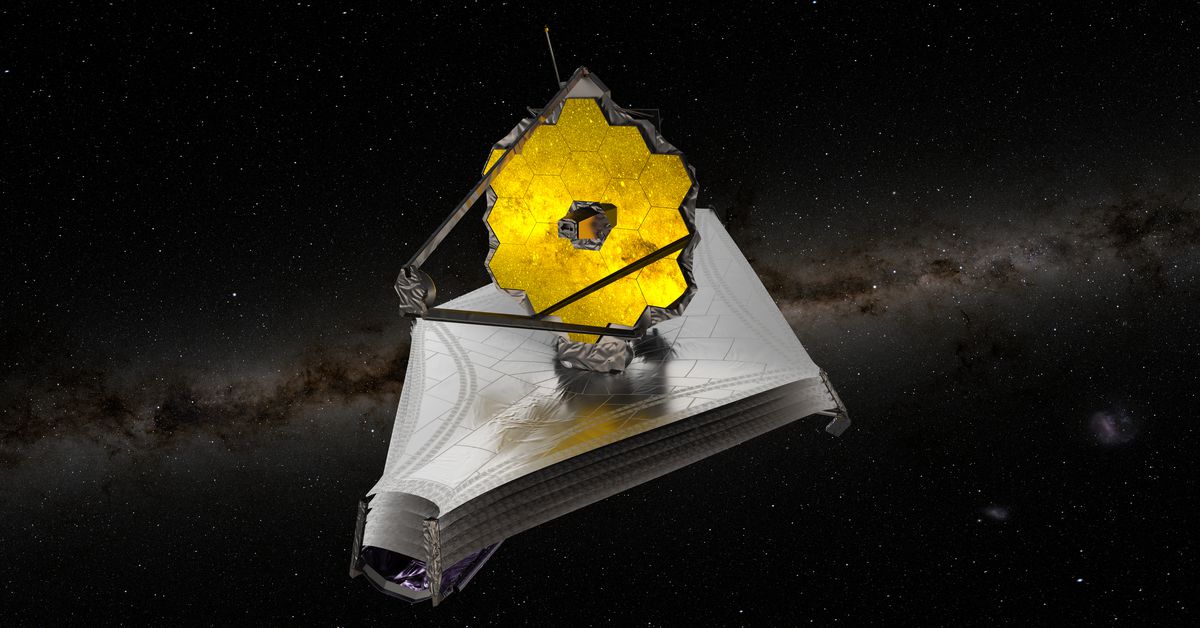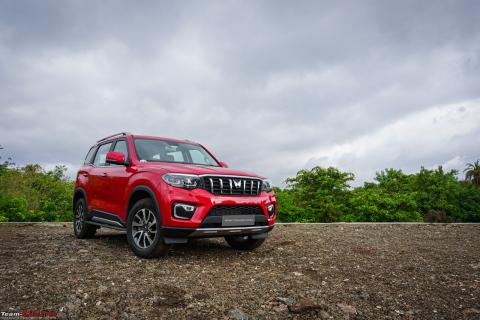For the past six months, Scott Friedman and a team of roughly 160 scientists and engineers have been working through one of the most daunting to-do lists in all of science. Nearly every day, they dropped everything at 1:30PM ET to meet and find out how much closer they’ve gotten to their goal: getting NASA’s James Webb Space Telescope, the most powerful space observatory in history, fully operational.
During each meeting, they reviewed all the work they had done over the last 24 hours with the observatory, which is currently zooming through deep space roughly 1 million miles from Earth. Sometimes their testing and measurements had gone well the day before, and they’d forge ahead with the next task. Other times, there’d be hiccups.
“We would have our scheduler there too and say, ‘All right, this one didn’t work so it has to be rescheduled. Let’s get it in the schedule as soon as we can so we can continue,’” Friedman, the lead commissioning scientist for the James Webb Space Telescope at the Space Telescope Science Institute, or STScI, tells The Verge. “And that was a tricky business.”
It was always going to be a monumental task to get the James Webb Space Telescope, or JWST, up and running. Equipped with the largest mirror we’ve ever sent into space, the observatory is set to fundamentally transform astronomy as we know it by capturing the light from stars and galaxies that formed while the Universe was in its infancy. But, before JWST can start collecting all these baby pictures of the cosmos, NASA and STScI, which oversees the telescope’s operations and science, needed to know that all of JWST’s state-of-the-art instruments and hardware could actually work in tandem to get the job done.
Now, the commissioning team is wrapping up their work, having successfully completed all their assignments just a few weeks late of their summer deadline. For a telescope that’s already a decade behind schedule, the team was remarkably punctual — all things considered. Thanks to their efforts, JWST is on the cusp of starting its first year of epic science observations. This transformational period of astronomy will begin with the release of the first full-color images taken by the observatory on July 12th. NASA hasn’t said yet what exactly the images will be, but we do know they’ll include a detailed look at the atmosphere of a planet outside our Solar System and the “deepest image of our Universe that has ever been taken,” according to NASA administrator Bill Nelson.
“What I have seen just moves me,” Pam Melroy, NASA’s deputy administrator, said during a press conference ahead of the image release, “as a scientist, as an engineer, and as a human being.”
Properly aligned
JWST has been on quite the odyssey. The observatory, which has taken about two and a half decades and nearly $10 billion to build, first had to survive the intensity of its launch on Christmas Day last year. Then, once it got into space, it underwent an intricately complex unfurling process to get into the right configuration for observing the cosmos. (JWST was just far too large to launch in its final form, so it had to launch folded in on itself like a tightly packed Swiss Army knife.)
The unfolding was a two-week-long nerve-racking process that included hundreds of moving parts and more than 300 events known as single point failures: procedures that had to work or they could jeopardize the entire mission. But, miraculously — or perhaps thanks to years of engineering and testing — the unfurling went exactly to plan, with the mission team working well into the night on New Year’s Eve to deploy some of JWST’s most crucial hardware.
:no_upscale()/cdn.vox-cdn.com/uploads/chorus_asset/file/23689605/1237417072.jpg)
But, almost as soon as the unfolding was over, the engineering team began to focus on JWST’s mirror. The observatory’s iconic gold-plated mirror, spanning more than 21 feet across, is actually made up of 18 hexagonal mirror segments that have to be aligned ever so precisely so that they function as if they were one single mirror. And they were nowhere near ready to do that. To get started, engineers first had to remove each of the segments off of devices known as “snubbers”: equipment that kept the mirrors in a snug position for the journey to space. “We launched them in a position that is safe for launch, but it doesn’t necessarily allow you to move the mirrors back and forth to align them,” Lee Feinberg, the optical telescope element manager for JWST at NASA, tells The Verge.
That process took a little more than a week, with each segment moving half an inch from their launch positions. Still, that was only the beginning. “That wasn’t even alignment,” Feinberg says. “That was just getting to the point that we could start, really.” The team then had to wait for JWST’s main infrared camera, NIRCam, to cool down enough that they could start using the instrument to collect images. Once NIRCam was nice and frigid, they used the mirrors to take their first picture with JWST, pointing all the mirror segments at a single bright star. The result: 18 different versions of that same star.
That was what the team expected; the segments were all pointing in marginally different directions. Thus began the painstaking process of moving each mirror segment ever so slightly so that those 18 pieces ultimately behaved as one. To tweak the position of one mirror, the team had to move the actuator on the back of the segment, adjusting it slowly by a minuscule amount. The alignment team would then use JWST’s instruments and take pictures of their progress, sending those images down to Earth. A series of algorithms would analyze the work and determine how to make further adjustments. Then the entire process would happen all over again. Step and repeat.
:no_upscale()/cdn.vox-cdn.com/uploads/chorus_asset/file/23154877/webb_telescope_2020.jpg)
Things moved at a snail’s pace, as each movement had to be done sequentially. And the team had to be extra careful when they moved each segment, verifying the exact position of each piece when they were done so that the mirrors didn’t inadvertently run into each other. But finally, after three months of tedious work, JWST’s mirrors came into tight focus.
“When the mirrors started to be aligned, they were off from one to the next by millimeters,” says Feinberg. “And by the time we were done, they were aligned to nanometers — so a factor of a million improvement in the alignment.”
Calibration
While mirror alignment was underway, the rest of the commissioning team turned their focus to JWST’s four main instruments. In addition to NIRCam, there’s NIRSpec, MIRI, and FGS / NIRISS. All four contain spectrographs, which break light into a spectrum that scientists can analyze to learn more about distant objects. Three of them also have cameras (NIRSpec is the odd one out). Just as the strings of a guitar need to be properly tuned before they’re used, so too do the highly complex instruments on JWST. The commissioning team’s job was to calibrate each of the instruments to ensure that they were ready and functioning properly when the observatory’s first year of science begins.
JWST’s instruments were booted up and first checked out when the mirrors were still being aligned since the team needed the camera and other instruments to help adjust the mirror segments. Still, the more robust calibration work couldn’t begin in earnest until the mirrors were fully lined up, which took about four months.
Now, over the last two months, the team has been putting the instruments through their paces, running through a long list of time-consuming measurements. “Sometimes they were quick, but sometimes they were 12 hours of observing time with many observations associated with it,” Friedman says.
Some of that work entailed simply using the instruments to observe standard stars, measuring their light and positions in the sky. The team then cross-referenced what they measured with what they know about these stars based on decades of past research to look for corrections that needed to be made. Every camera, even JWST’s NIRCam, has some built-in distortion in its images. By measuring those distortions, the teams can correct for them in the future, according to Friedman.
Some of the calibrations entailed demonstrating JWST’s prowess. The observatory may only have four main instruments, but each instrument has different operating modes that offer various capabilities, and the commissioning team had to test out and verify each mode. The observatory as a whole also has different operating modes that had to be calibrated. For instance, JWST will need to be able to track relatively fast moving objects like asteroids and the moons of the outer planets in our Solar System, so the commissioning team practiced this capability by locking onto test asteroids, using “guide” stars as references in the sky to make the asteroid appear still. It’s all complicated work that hadn’t been tested in space before. “It’s one thing to write that down on a piece of paper and to test everything you can on the ground, but it’s not the same as in flight,” Friedman says. “We have to demonstrate these things.”
For the most part, Friedman says the entire calibration and commissioning process went very smoothly, though there were a few hiccups along the way. JWST went through half a dozen “safe haven” events when the spacecraft detects something it doesn’t like and goes into a safe operating mode to preserve its instruments and power. In total, those events, mostly related to attitude control, only lasted four days, and the JWST team says such moments are “typical” of a new spacecraft.
“Every spacecraft has a very unique personality when it gets on orbit,” Bill Ochs, the project manager of JWST at NASA, said during a press conference. “There are unique things about it that no matter how much ground testing you do, you do not learn until you actually get on orbit, and we had those experiences.”
Adding to that stress, one of JWST’s 18 mirror segments was struck by a larger than expected micrometeoroid in May, leaving a small dimple. While NASA says the observatory can still perform the extraordinary science it’s designed to do, the mirror segment had to be adjusted slightly to correct for the damage.
:no_upscale()/cdn.vox-cdn.com/uploads/chorus_asset/file/23689644/52196657049_03ed807621_o.jpg)
But, despite these minor issues, the commissioning team was able to finish up all the work on their to-do list during their allotted six-month period, only a couple weeks behind schedule. To them, it was nothing short of a miracle. “If you had asked me before launch, ‘Do you really think you’re going to finish in six months, or within a few days?’ I would have said, ‘Well, I hope so. But man, there’s a zillion things that could go wrong,’” Friedman says. “And you know what? None of those zillion things went wrong. They all went right.”
Now, the commissioning team is entering a new phase. Soon, JWST will enter its first year of science observations — what’s known as Cycle 1 science — which is jam-packed with plans to target exoplanets, galaxies, exotic stars, and more. Those working with JWST’s instruments will move into a support role for the astronomers who have time with the observatory in the first year. Those scientists will inevitably have questions about how to use this powerful new observatory or how to interpret their results, and the instrument teams at NASA and STScI will need to be on hand to provide answers. “The observatory will be used in ways that we haven’t completely experienced yet,” says Friedman. “So we’ll be watching that carefully.”
While the work still isn’t done, it’s a bittersweet time for the people working on the team. The daily commissioning briefings are coming to an end, and many of those who put in long hours to tee up JWST for its first year of science are winding down. That isn’t necessarily a bad thing for some.
“For me personally, I just want to sit back and now enjoy it,” says Feinberg, who’s been working on JWST’s development in some form for the last 20 years. “You know, let the scientists have their day and do great things. I’m just looking forward to looking at the images with the rest of the planet and enjoying discovering the Universe.”




